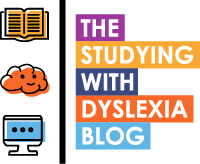As we celebrate Neurodiversity Celebration Week, it's important to recognise and raise awareness about dyslexia, a specific learning difficulty that primarily affects reading, writing, and spelling. Dyslexia is often misunderstood, but it’s crucial to understand that it is not related to intelligence; rather, it concerns how the brain processes written and spoken language.
At Studying with Dyslexia, we are dedicated to providing valuable resources and creating a supportive community for those affected by dyslexia and other neurodivergent conditions. Understanding dyslexia’s unique challenges can help educators, parents, and individuals find the support strategies that make the biggest impact.
Areas Affected by Dyslexia
Dyslexia impacts various aspects of learning and development, including:
Reading fluency and accuracy: Dyslexic individuals may struggle with reading smoothly and accurately.
Spelling and written expression: Writing tasks often pose challenges, from spelling to forming coherent written responses.
Working memory and processing speed: Students may find it difficult to remember information or process it quickly enough during tasks.
Phonological awareness: This is the ability to identify and manipulate sounds in words, a fundamental skill in reading and spelling.
Organisational and sequencing skills: Dyslexia can affect the ability to organise thoughts, work through steps systematically, or manage tasks efficiently.
Beyond academic challenges, dyslexia can also affect self-esteem, confidence, and emotional well-being, particularly if students face frustration or anxiety related to literacy tasks. This is why it’s so important to approach every dyslexic student as an individual, recognising their unique challenges and strengths.
Effective Support Strategies for Dyslexic Students
Supporting dyslexic students requires understanding their individual needs and providing appropriate accommodations. Here are some key strategies that can make a significant difference:
Provide extra processing time: Dyslexic students may need additional time for reading and writing tasks to process information at their own pace.
Use assistive technology: Tools such as audio books, voice-to-text software, and visual aids can be immensely helpful in supporting learning and reducing barriers.
Encourage dyslexia-friendly fonts: Fonts such as Arial, Comic Sans, or Open Dyslexic, which have clear and simple letter structures, can improve readability for dyslexic students.
Clear, concise instructions: When giving instructions, make sure they are direct and easy to understand. Breaking tasks into manageable steps helps students stay focused and organised.
Individualised learning programmes: Tailoring a programme that focuses on areas of weakness, with structured, step-by-step guidance, can support dyslexic students in their educational journey.
Embracing Multisensory Learning
Many dyslexic students benefit from multisensory learning approaches, which engage more than one sense at a time, such as combining visual, auditory, and kinaesthetic (movement-based) learning. Structured phonics-based interventions are also effective in helping dyslexic students improve reading and spelling skills.
By focusing on their strengths and providing the right support, we can ensure that dyslexic students thrive both academically and emotionally.
Thank you for reading! If you found this article helpful and want to stay updated with the latest insights on dyslexia and neurodiversity, please sign up for our newsletter. To support our work and help us keep the blog running, consider supporting the blog by clicking here.
